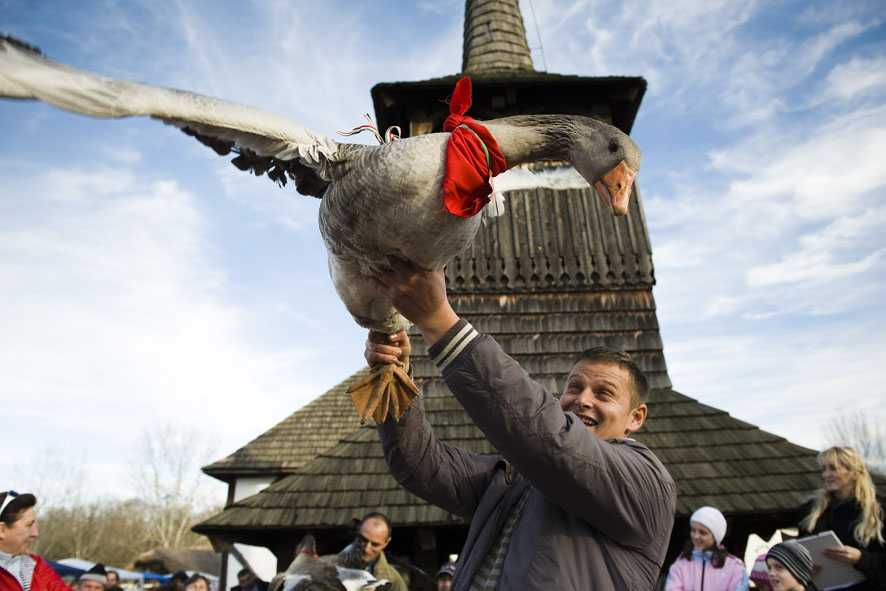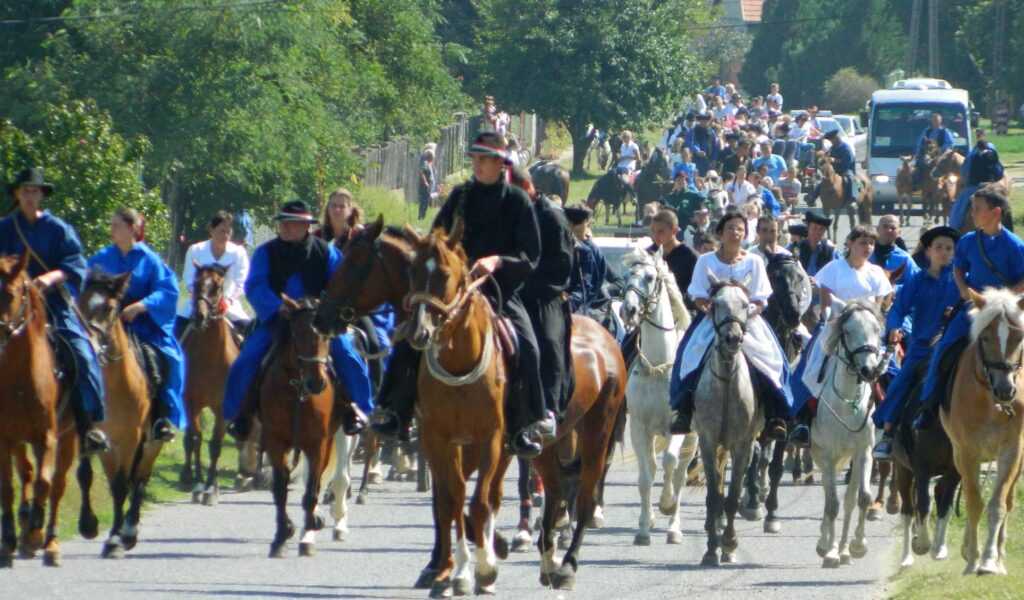Autumn has always been an important season in Hungary because it brings many changes in nature that affect people’s daily lives and traditions. Hungarian autumn traditions have numerous expressions, some of which we present below.
The tradition of autumn harvest has long been present in Hungary and is one of our most important traditions. During the harvest, people celebrate and at the end of the harvest, they give thanks for the abundant crops that the earth has provided. After the harvest, families gather and celebrate with a shared meal and drinks to honor the results of the harvest.
The tradition of autumn nights is also an important part of Hungarian traditions. Autumn nights are longer, and due to the cold, people spend more time at home, so evening programs are significant. People gather, chat, play, and often offer guests a delicious pastry, hot beverage, or mulled wine.
Autumn marks the beginning of the harvest season, which has been celebrated in Hungarian folklore for a long time. During the autumn harvest season, people harvest grapes and apples, and use the valuable crops to make fine wines and apple dishes. The harvest season is often celebrated with festivities where traditional Hungarian foods and drinks are emphasized.
Autumn is also associated with many beliefs and superstitions. People believe, for example, that during the autumn months, the connection between nature and supernatural forces is stronger, so spirits and otherworldly beings can more easily appear during the autumn season. Therefore, during the autumn season, more superstitious people often use protective spells and many people follow traditions that help ward off evil spirits and protect their homes.
St. Martin’s Day
We celebrate one of the most popular saints of the Middle Ages on November 11, but St. Martin’s Day is not just about this – it is one of the richest folklore days in Hungarian folklore.
St. Martin was born around 317 and was famous for his generosity and goodwill even in his youth – he helped the poor, the sick, and the needy, and the people loved him so much that they wanted to make him a bishop. However, our hero was less eager for this appointment, so he hid from it in a goose pen, where the animals immediately revealed his presence with their loud quacks, and he became a bishop and later a saint.
However, November 11 was important for other reasons for the people, as it was the day when the harvest and grape harvests were finally completed, the workers received their coveted wages, and an already fattened goose, which was recommended to be consumed immediately, was served, given that a 40-day fast began the next day.
So if we consider it, the geese didn’t really get the better end of the deal by exposing Martin. Similarly, the livestock received Martin branches as gifts from the shepherds on this day and were beaten with them to ensure a successful breeding season. But it wasn’t just the goose that ended up on the tables, as it was also the first opportunity to taste the new wine, which was said to bring a happy year to those who drank it – although the hangover is not mentioned in the legend. The new wine sipped during the toast is called the Martin’s Cup. However, some foods posed a risk during the celebration – such as carrots, the consumption of which would lead to the unpleasant habit of bedwetting for the whole year. It’s customary to drink as much as possible on Martin’s Day, and those who skip the goose meat from the menu will go hungry all year long.
And if we’re already talking about a goose feast, let’s play a little game with the food – or what’s left of it, as the back of the goose always went to the village priest, hence the name “bishop’s bite.” On Martin’s Day, when we pull the meat off the freshly roasted goose, it’s customary to examine the color of the breastbone, which, if it’s white, indicates a snowy winter, while a brown bone means a rainy season. This parallel is particularly interesting because folk observations regarding weather work in reverse: if it snows on Martin’s Day, it will be a rainy winter, but if it rains, it will be followed by frost and a long dry spell, while hail suggests an early, March-like spring.
Renátó Romanoczki

Source: https://www.inf.u-szeged.hu/~tanacs/cserkesz/szokas/szosz.html
https://mek.oszk.hu/04600/04691/html/dtmagynepsz0008.html
https://www.arcanum.com/hu/online-kiadvanyok/MagyarNeprajz-magyar-neprajz-2/vii-nepszokas-nephit-nepi-vallasossag-A33C/szokasok-A355/jeles-napok-unnepi-szokasok-A596/
Source of imagines: perkata.hu, azutazo.hu
Main photo: Harvest Festival in Perkáta

